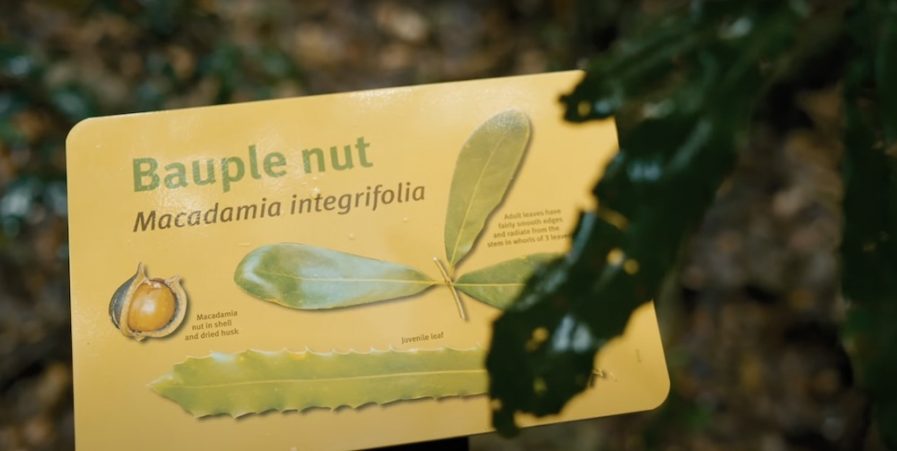As a young boy growing up in Australia in the 1940s, macadamia industry pioneer Ian McConachie would climb his neighbour’s fence to steal macadamias from their backyard tree. What he didn’t realise back then was that the macadamia would become his life’s work and that his efforts to conserve endangered wild macadamia populations would be crucial to the industry’s future.
Ian’s wild macadamia conservation work is the subject of the latest Macadamia Change Makers video. It was created to help educate consumers about Australia as the origin of macadamias and why protecting the few macadamias left in the wild is so important to the future of the global commercial industry.
Australia: the macadamia’s natural home
It’s a little known fact that macadamias are native to Australia. They first originated in the rainforests of the east coast 60 million years ago and Australia is the only country in the world where macadamias grow wild.
Despite this, recent research1 has revealed that while many consumers know that Australia grows macadamias commercially, few are aware that macadamias originated in Australia.
With consumers more interested than ever in the origin of their food and product ingredients, Australia’s macadamia industry is committed to closing this knowledge gap, and the video is one step on the path to achieving this.
Why wild macadamias are under threat
From South Africa to Hawaii, China to Kenya, every single macadamia tree in the world can be traced back to the wild macadamia trees that still grow in the Australian rainforest.

Over millions of years macadamias retreated to little favourable niches in the rainforests. But since European settlement, up to 90% of wild macadamias have been lost due to land clearing, with wildfires, grazing, weeds and climate change posing ongoing threats to their populations. There are four wild macadamia species, all of which are now classified as either vulnerable or endangered by the Australian government.
It’s a tragic example of precious native flora falling victim to human intervention, but for the macadamia industry globally, the need to protect what remains runs far deeper.
Why wild macadamia conservation matters to our industry’s future
Conserving the genetic diversity found among all four endangered wild species plays an important role in securing the future of the macadamia industry.
Wild macadamias offer a wealth of genetic diversity and many of the commercially grown macadamia varieties the industry relies on today are from a very narrow genetic base. The DNA of wild macadamias holds significant untapped potential for development of the international macadamia industry. It could hold the key to breeding commercial macadamia varieties that are not only more productive, but better adapted to changing weather patterns, emerging pests and possible diseases.

As the only home of wild macadamia trees, Australia is the guardian of this diversity which is why Australia’s macadamia industry is so invested in conserving these important wild tree populations.
From a sustainable sourcing perspective, food manufacturers investing in Australian grown macadamias as an ingredient can feel confident they’re sourcing a premium product from the country that is not only the origin of macadamias, but also leading the way when it comes to conservation and future-proofing supply.
Macadamia Conservation Trust launches the Wild Walk with Macadamias

The Trust was formed by a group of passionate enthusiasts led by Ian McConachie, who were all dedicated to protecting wild macadamias. In 2007 it became a registered environmental organisation with the Australian government.
“The first step, when the Macadamia Conservation Trust formed, was to prepare what we call a recovery plan. That was a detailed list of the wild macadamias, where they were located, the risks they were facing, but more particularly, the actions that were needed to conserve them,” explains Ian. “That recovery plan was adopted by the Australian government and that became our blueprint.”

Located in the Amamoor State Forest in the Noosa Hinterland in northern Australia, the signposted rainforest walk enables people to experience macadamias growing in their natural habitat.
We thank Ian for his ongoing commitment and effort in conserving macadamias in the wild.
1 Qualitative research conducted by independent research agency FiftyFive5 in May 2022 with consumers in Australia and South Korea.


